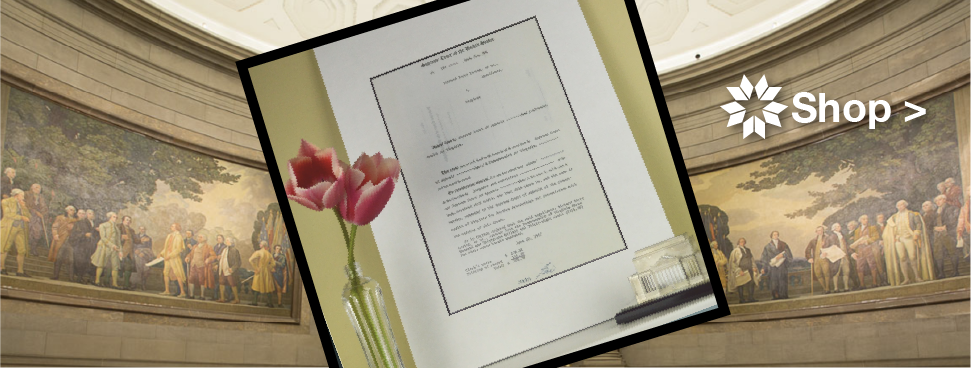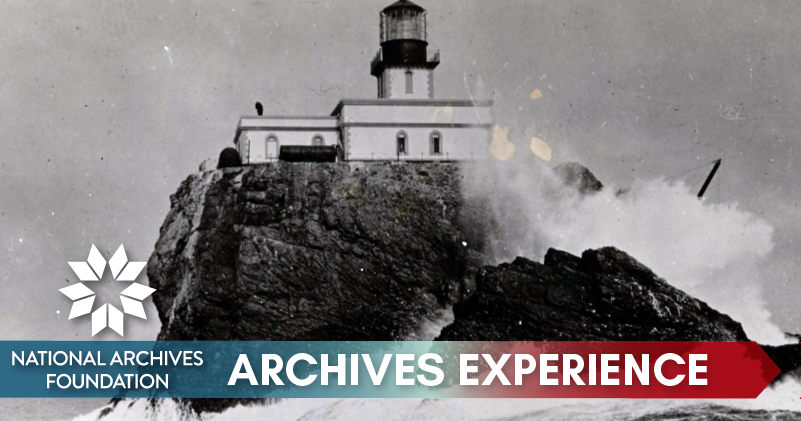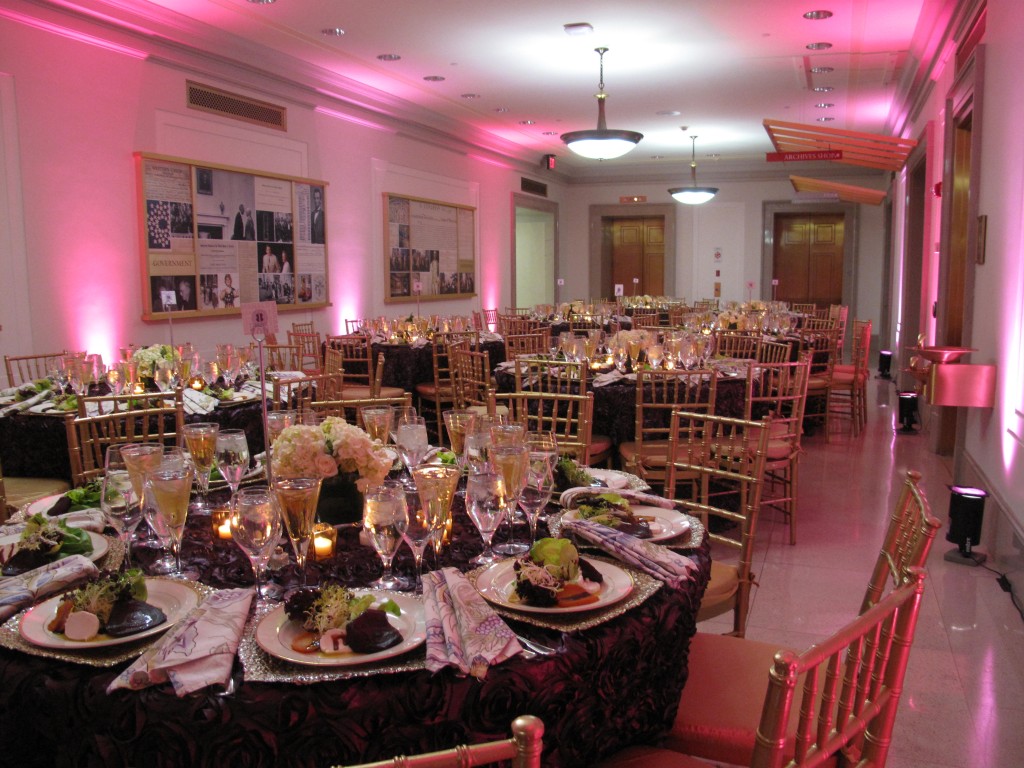The Path to the Past
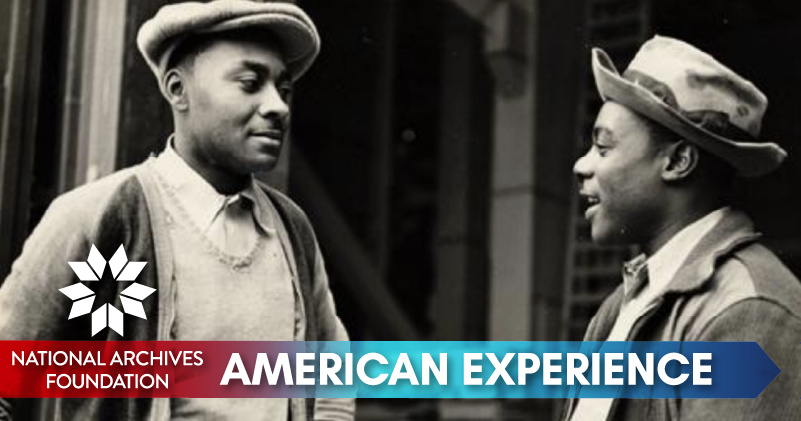
What do you know about your family history?
For me, family lore came from attending holiday gatherings as a kid, listening to my aunts and uncles regale colorful stories about each other. They nearly always ended in a burst of laughter from everyone or in someone shouting, “That’s not true!”
For many, discovery only comes from a dusty photo album or letters secreted in an attic that are found when a relative passes away. For Black Americans, the path to detailed family history is not as clear or simple to trace. But this week, we asked our guest writers – all Black genealogists – to share the stories, strategies, and successes they used to uncover their own family histories.
Thanks to the dedication and knowledge of NARA archivists, Black history has never been more accessible.

Patrick Madden
Executive Director
National Archives Foundation
Relevance to Revolution
Shaquan McDowell explores his family tree and finds an ancestor who defied traditional expectations…
History and ancestry have always been important to me. As long as I can recall, I asked every adult around me to tell me what they knew. As a Black American, however, I found that information is often limited. But through my mother’s maternal line, I happened upon a lead: a family photo, a family surname “Scott,” and a passed-down phrase: “Our ancestors were buried in Walnut Grove.”
That phrase means little to most people, but for a Spartanburg native, it means a lot. Spartanburg, South Carolina sits in the county that saw more Revolutionary War skirmishes than any other in the country. The Walnut Grove Plantation/Settlement was home to key figures of the Revolution, including “Kate Barry,” a woman who had to tie her baby to her bedpost, while alerting the patriots that the British were on their way [Year: 1810; Census Place: Spartanburg, South Carolina; Roll: 61; Page: 370; Image: 00334]. Locals often called her the “female Paul Revere.” I was unsure of my possible association with the Barrys and assumed my ancestors were enslaved by the family, but the facts I found didn’t completely align with my assumption.
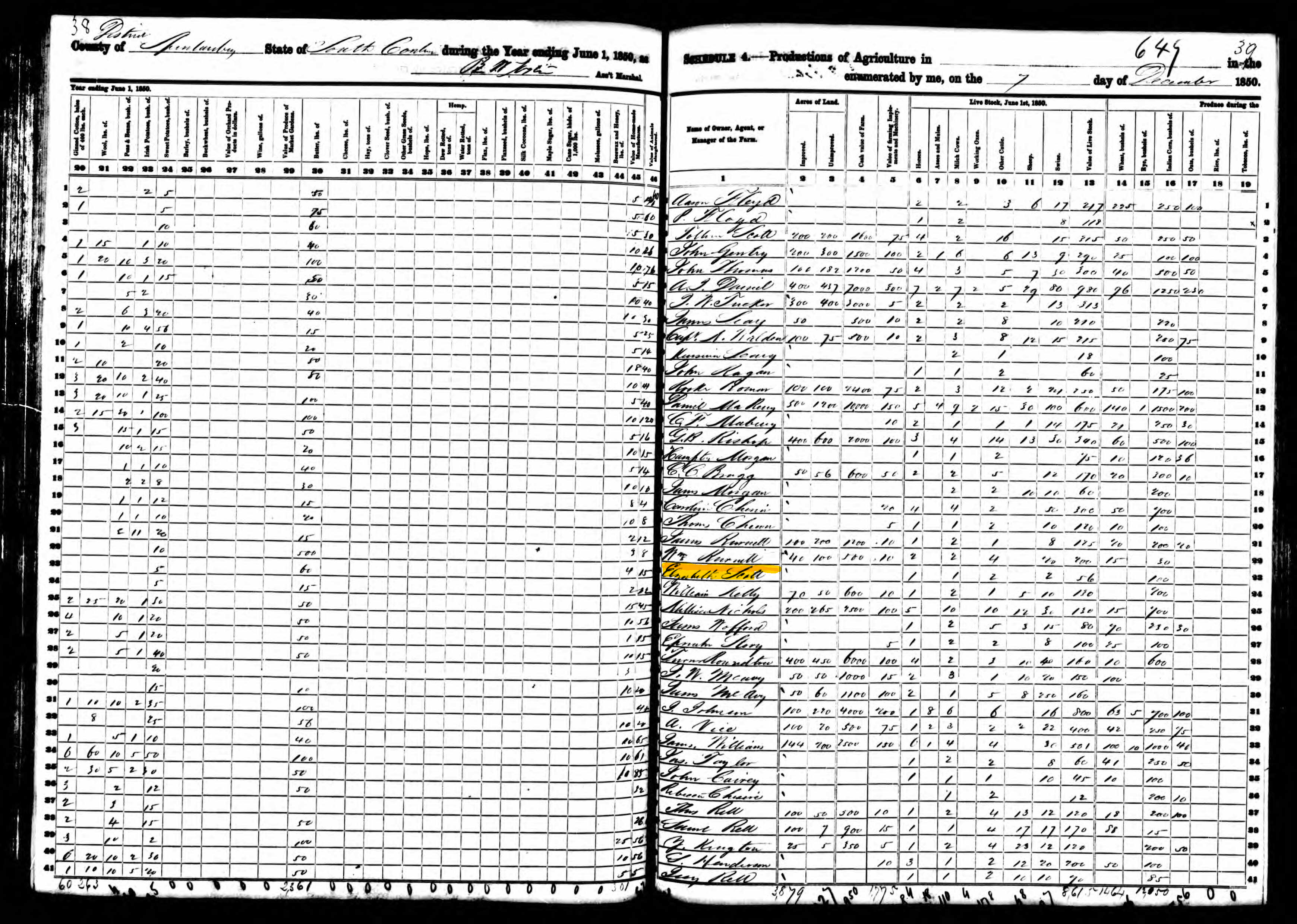

As I climbed up the Scott tree, I came across the 1830 census and the progenitor of the Spartanburg Scotts: Elizabeth Scott, a free woman of color and the head of household that included four other free people of color [Year: 1830; Census Place: Spartanburg, South Carolina; Series: M19; Roll: 171; Page: 330]. That a person of color was free was a surprise in itself, but that a free woman of color led a household defied societal conventions. I was intrigued. Fascinated, I dug up everything I could about Elizabeth, tracking her life as a Black woman property owner [Census Year: 1850; Census Place: Spartanburg, South Carolina; Archive Collection Number: AD260; Roll: 2; Page: 649; Line: 1; Schedule Type: Agriculture] in Antebellum, South Carolina. She died in 1882, at the age of 72 and was buried at Walnut Grove United Methodist Church. The church was founded in the 1850s by predominantly white congregants who were descendants of Revolutionary War patriots. Elizabeth and her family were among the few black members.

As a woman of color growing up in a county consumed by the Revolution, Elizabeth, who lived just a generation afterward, was directly influenced by it. I wondered how deep that influence ran, so I went back to the 1830 census. Living right next door to Elizabeth was a man named John Bolton, also a free person of color. I decided to look into John a little more. I discovered that his father was named Spencer Bolton. According to federal pension records [NARA, R.995, M804, Roll 296, frame 732 of 809], Spencer Bolton was from Pee Dee, South Carolina, and was a documented free man of color who served under Captain James Ford in the revolution. When the revolution ended, Bolton left Pee Dee and moved first to Spartanburg and later to Henderson, North Carolina. His son John remained in Spartanburg, settling right next to Elizabeth.
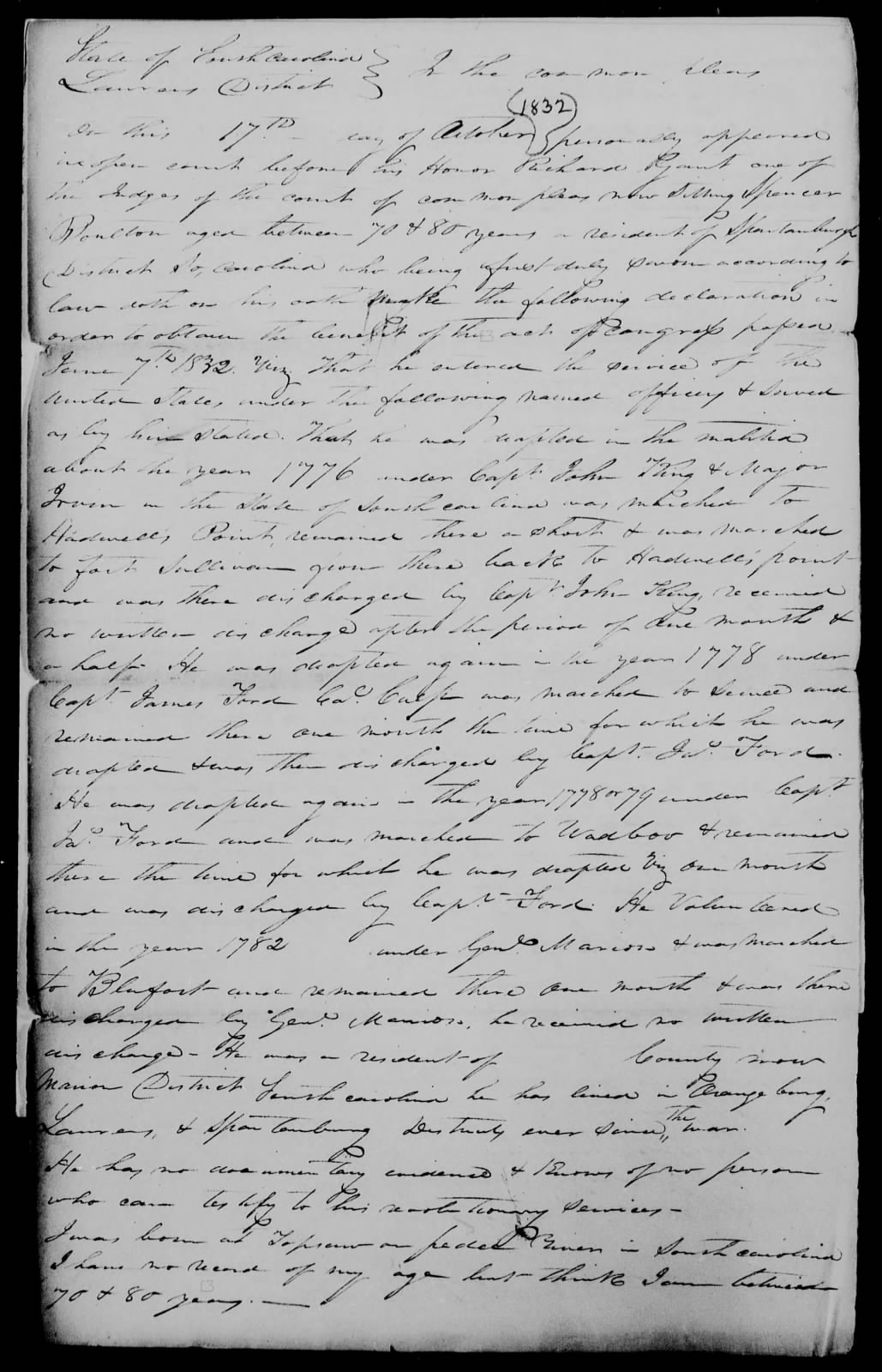
When I started my quest as a child, I never would have expected to learn what I did. Conventional recountings of Black American history dismiss any agency or impact prior to the Civil War by those enslaved or free. My direct ancestor and her neighbors had thrown a wrench into that narrative. Since the very beginning of American history, Black Americans have affected our country. From the 8,000 African-descended men who fought in the revolution to their families and communities that supported them back home, Black Americans have held a particular relevance to the revolution and throughout America’s history. The documents preserved by the National Archives that told me the story of Elizabeth and John reveal just how instrumental Black Americans have always been since the founding of our country.
Discovering my Great Grandfather
Raymond Cousins celebrates the strength and courage of his grandfather, Charles Stallings Sr….
I was introduced to my great-grandfather Charles Stallings, Sr., by my grandfather, who rarely spoke much about his family. All I knew of his family history was that he was named after his father. When I asked him to share more about him, he said he was a very serious man who worked a lot. When I started looking into Charles William Stallings, Sr., I found him listed in the 1930 census as living in Gary, Indiana, the son of Virgil Stallings, a Spanish American war veteran and steel worker, and Stella Stallings, a homemaker.

Source: Raymond Cousins
Dr. Charles Stallings, Sr., was born May 15, 1915, in Springfield, Missouri. His life had a very tragic beginning—although she was listed as his mother Stella was not his biological mother. His actual mother, Dovie Stallings, passed away when he was four years old, and his brother, Virgil Jr, was tragically killed in an accident at nine years old when Charles was 15. He was drafted into the United States Army, and while stationed at Fort Lee, he married my great-grandmother, Lucille Brown. Charles Stalling, Sr., received his bachelor’s degree from Lincoln University in Missouri in 1939 and a master of arts degree from the University of Iowa, where he was a student of Fletcher Martin and a classmate of Elizabeth Catlett. After he served in World War II, he and his wife had Charles Stallings, Jr., my grandfather, and his brother, Franklin Stallings. They settled in Baltimore, where Charles, Sr., joined the art department faculty.
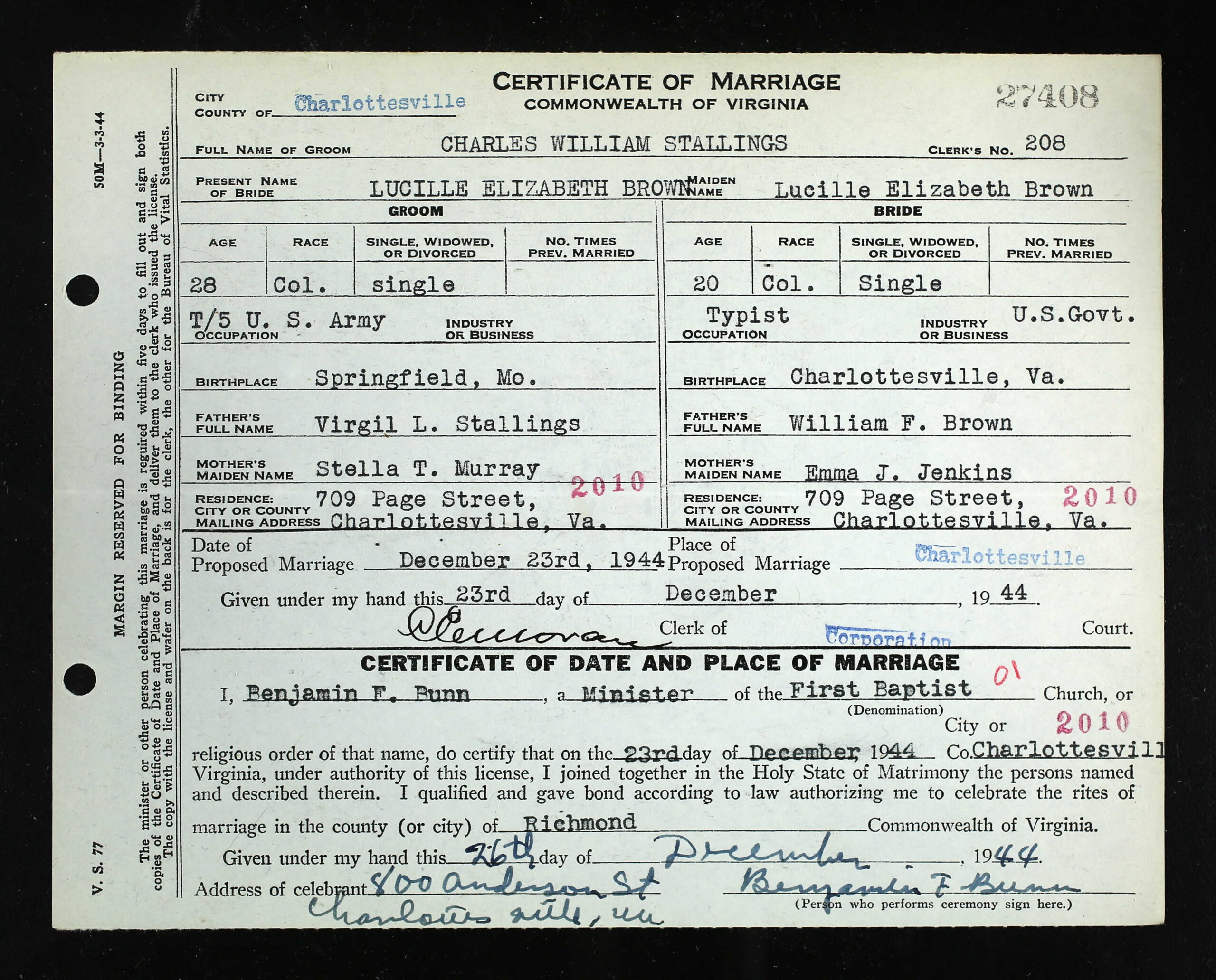
Source: Raymond Cousins

Source: Raymond Cousins
Charles’ drive for higher education did not end there. He taught at Morgan State, raised his young family, and commuted to the University of Pennsylvania, where he received his Ph.D. in education, becoming Dr. Stallings. A man who had suffered so much tragedy defied the odds and persevered. He became an award-winning painter and sculptor whose artwork has been shown in museums across the country. After twenty years of teaching, he became the head of the art department at Morgan State University and then moved on to Bowie State University where he served as the Dean of Faculty for ten years before retiring.

My grandfather was a man of few words when it came to his family. During a visit, I excitedly told him all I had learned of his father. With his sly smirk, he said, “Man, you’re pretty good, but one thing you missed was that he received a law degree from the University of Baltimore.” What else had this man accomplished? So many accolades and amazing achievements. I’m so grateful my grandfather shared what he did and even added to my research about my great-grandfather. He is now also an ancestor, having passed in July 2021.
That a man with so much stacked against him and endured so much loss, segregation, and inequality found the strength and courage to become so outstanding is what makes him and his life so intriguing. His dissertation featured a mural of the journey of African Americans from when we arrived upon these shores until the present day. I may not have known about Dr. Charles Stallings, Sr.’s, legacy while I was growing up, but he has become a profound inspiration. I will make sure his legacy will never be lost again.

Black History Resources
The National Archives is home to many resources that can help African Americans trace their genealogies and learn more about the Black experience. The records of the Bureau of Refugees, Freedmen, and Abandoned Lands (the Freedmen’s Bureau) are stored in Record Group 105. Established in early 1865 and active primarily through 1868, the bureau was responsible for helping both newly freed Blacks and freedmen and for managing all lands that had been seized or abandoned during the war. The records in this collection offer a detailed look at the experiences of Black people during this period of American history.
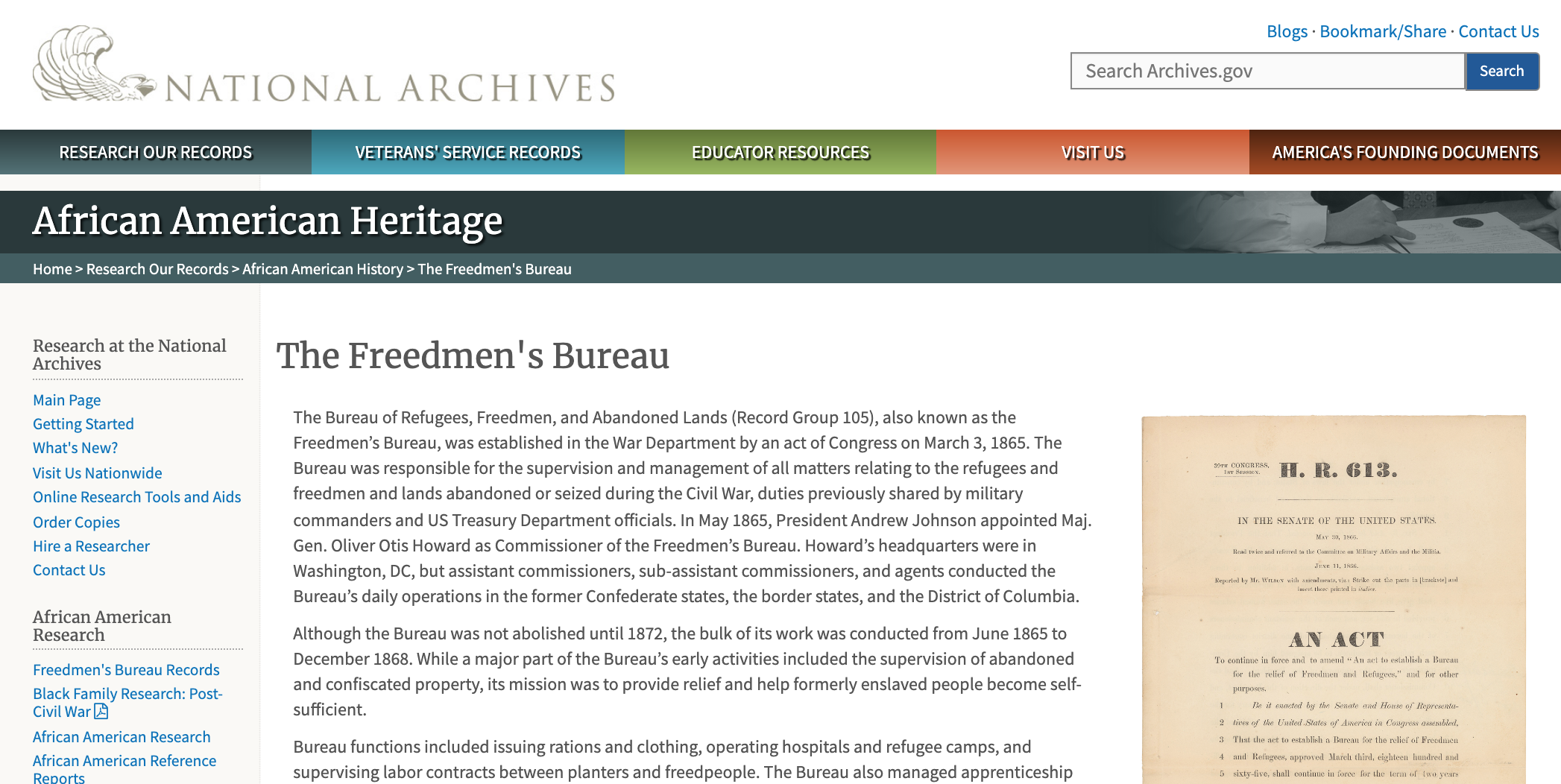
“In the aftermath of the Civil War, the Freedmen’s Bureau was often the only governmental institution of any kind operating in the war-torn South,” explains Archivist Damani Davis. “As such, the Freedmen’s Bureau served multiple roles as the prime relief agency, employment agency, travel agency, hospital system, educational department, court system, law enforcement, veteran’s administration, and census bureau, among other roles, depending on the state.
“Many researchers conducting more in-depth exploration into the Freedmen’s Bureau records have often expressed frustration in navigating them [the Freedmen’s Bureau Records], whether on microfilm or in an online format.

“There is no systematic or standardized format to this information, however, and the arrangement of the records can vary sharply across offices and states. This is due to the fact that the Freedmen’s Bureau state offices and local field offices were not heavily micromanaged or rigidly controlled from the Washington, D.C., headquarters.” Freedmen’s Bureau Website.
NARA’s Say It Loud Blog investigates and celebrates less well-known aspects of African American history. Netisha Currie, archives specialist, served as founding chair of the blog. “EAG and I enjoy managing the blog and web content that will make records relating to Black history more accessible,” she says. “The blog was launched in Jan 2013 with the aim of drawing attention to the many records of NARA relating to the Black experience. We’ve also been able bring more awareness and access to the records with the research page on Black history and its subject portals.”

The Meeting House

see page 25 of the “Black Church” document
In the United States, Black churches are central to the life and culture of their communities. They have served as points of connection between people who often were badly treated outside of their walls. Particularly in the run-up to the Civil War, these churches were safe harbors for Black people who were striving to secure their freedom.
“The Black Church has a long and noble history in relation to Black political action, dating back at least to the late 18th century,” the renowned historian Henry Louis Gates, Jr., noted in his book The Black Church: This Is Our Story, This Is Our Song. “The failure of enslaved African Americans to overthrow the institution of slavery, as their Haitian sisters and brothers would do, cannot be traced to the supposed passivity inbred by Christianity; rather, it can be traced to the simple fact that, unlike the Black people enslaved on Saint-Domingue, African Americans were vastly outnumbered and outgunned. Violent insurrection would have been a form of racial suicide.

National Archives Identifier: 2803443
What the church did do, in the meantime, as Black people collectively awaited freedom, was to provide a liminal space brimming with subversive features. To paraphrase one of the standard phrases from the Christian tradition, one should never underestimate the power of prayer. Just ask Bull Connor or George Wallace. Without the role of the Black Church, the Civil Rights Act of 1964, and the Voting Rights Act of 1965— signed into law by President Lyndon Johnson, with King by his side at both, and future congressman John Lewis, himself an ordained Baptist minister, present in 1965—would never have been enacted when they were. There is no question that the Black Church is a parent of the civil rights movement, and today’s Black Lives Matter movement is one of its heirs.”

African Meeting House
The African Meeting House on the north slope of Beacon Hill in Boston, Massachusetts, is the oldest such building in the United States. Built in 1806 with almost exclusively Black labor and financed by donations by both Black and white people, the meeting house served the community as a cultural and religious center from its founding until 1898, when the congregation sold the building and moved to the South End of Boston. The building is on the National Register of Historic Places. The documentation for that designation is held in the National Archives.
Loving


On June 12, 1967, the United States Supreme Court overturned laws in the state of Virginia that prohibited interracial marriage. The plaintiffs of the lawsuit the court heard, Richard Perry Loving, a white man, and Mildred Delores Jeter Loving, a woman of African American descent, had married in Washington, D.C., in June 1958 and then moved to Virginia, where interracial marriage was illegal. In July 1958, authorities arrested the Lovings, charging them with violating the Racial Integrity Act of 1924. Facing the option of serving jail time or leaving Virginia, the Lovings moved away. They could not return to Virginia to visit family together—each of them had to travel to the state alone. Finally, in 1963, the Lovings challenged the Racial Integrity Act in court. When the Supreme Court affirmed the legality of marriages between people of different races in the United States, the Lovings were notified by telegram of the court’s decision.
